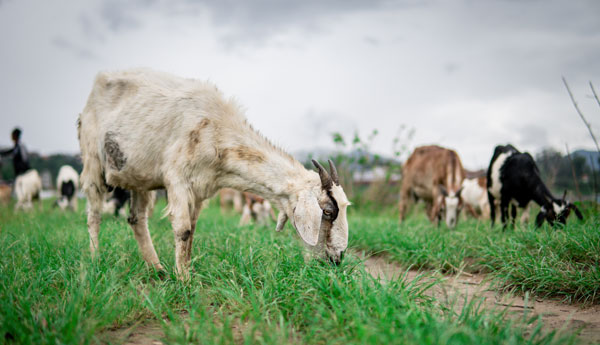
Happy Friday folks! Last week, we left off our goat series with an overview of these hard-headed critters. Far from a unified species, goats range from shaggy mountain breeds to short-haired plains dwellers, each with their own varying characteristics and temperaments. Read on for five popular dairy variants, and some key traits associated with each.
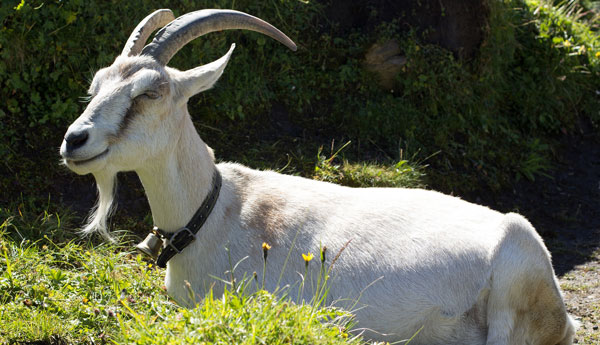
1. Alpine
Chances are, even if you don’t know much about goats, you’re familiar with alpines. A medium to large breed (read: 130-lb.-does to 170-lb.-bucks.), these are one of the most common milkers around. With horns, a straight profile and erect ears, the goats really don’t have any set colors or markings. As their name suggests, they originated in the alps, but are surprisingly short-haired given their native climate. Their daily milk yield sits between one and two gallons, while their butterfat content is around 3.5 percent. If you don’t know the importance of that last metric, well, you should check out this great article here.
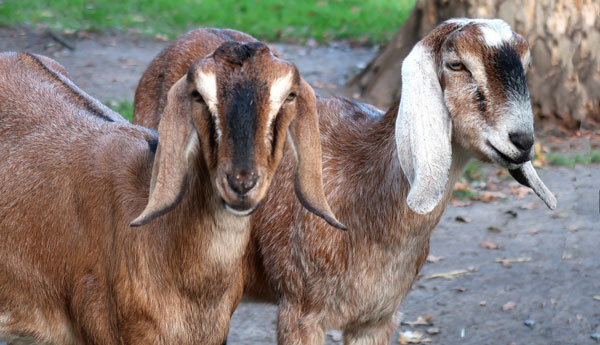
2. Nubian
The second-most common breed, Nubians are hands-down my favorite goat. With coarse shaggy coats and ornery-but-sweet dispositions, these black-white-and-brown beauties sport floppy ears and sloping noses, which seem to belie their cunning. Yes, I did say cunning, as I’ve had these goats eventually escape almost every pen they’ve ever occupied. On the other hand, I did lose several pages of algebra homework to a Nubian’s appetite back in middle school, so perhaps the genius only comes in short spurts… Loud and active, the goats average around 5 pounds heavier than their alpine brethren, and yield about a gallon of milk a day. The butterfat content of this milk, however, sits at a creamy five percent, making them a favorite among milkers.
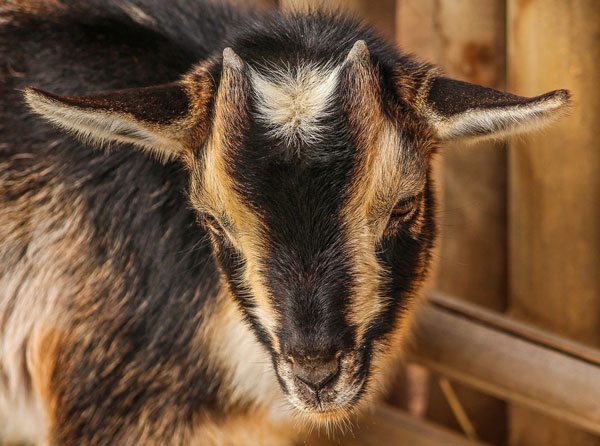
3. Nigerian Dwarf
Looking for something on the other end of the scale? Nigerian Dwarf goats ideally weigh only around 75 pounds for bucks, and 55 for does. Colored primarily in black, light brown and even a vaguely gold hue, the goats’ secondary colors range all the way to red, making them quite striking to look at. While milk production from these diminutive dwarves is to scale, at just a half a gallon, they more than make up for it in butterfat, which ranges between 6 and 10 percent. This is the highest content among caprines. Their playful nature will seal the deal if you have small children, who will love caring for these gentle companions.
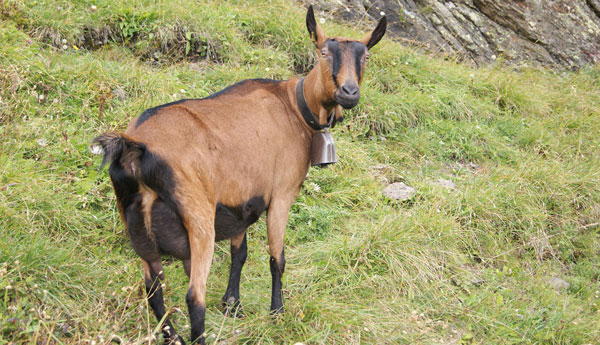
4. Oberhasli
Often called “Swiss Alpine,” these medium-bodied goats are reddish-brown, with large black tufts around their body, and a black dorsal stripe. With a protrusive beard and long, curving horns, Oberhalsi are gentle and easy to train. Weighing in around 120 pounds for does, and 150 pounds for bucks, these goats produce half to a full gallon of milk a day, with a 3.8-percent butterfat content. As an added bonus, their stout hind quarters, accustomed to climbing steep Alpine ridges, make them great pack animals with a little training.
5. LaMancha
While these goats may sound like they come from Miguel de Cervantes’ famous homeland, they were in fact created by Eula Fay Adams Frey, in 1930s Oregon, of all places. A cross between short-eared Spanish goats and Nubians, the breed can have either almost-flapless “gofer” ears, or pointed “elf” ears. Ranging around 130 pounds for both bucks and does, the breed produces a gallon of milk a day, with a 4.2-percent butterfat content. Even better? They can produce milk for over a year without needing to be freshened (bred again).
BONUS GOAT!
I cannot end my first goat-breed roundup without mentioning the comedic, and increasingly internet-famous fainting goat. Properly called Myotonic goats, they possess a genetic condition called myotonia congenita, causing their muscles to briefly stiffen when startled–they don’t *actually* faint. They are one of the few breeds native to North America, and are hence sometimes referred to as Tennessee fainting goats. Primarily bred for meat and nowadays for amusement, back in the day their inclusion in the herd had a slightly more sinister purpose. Since they fall over after suffering a fright, many farmers viewed the breed as great protection for sheep herds–the friend you trip when a bear is chasing you, if you will. If a wolf or coyote attacked the herd, the poor thing would fall over and be torn to shreds, allowing the sheep time to escape to safety. That, of course, is the tale told round the hearthfires in my sleepy little town. How often this was actually done is uncertain, and the practice has certainly fallen out of vogue in the modern day.
A humble homesteader based in an undisclosed location, Lars Drecker splits his time between tending his little slice of self-sustaining heaven, and bothering his neighbors to do his work for him. This is mainly the fault of a debilitating predilection for fishing, hunting, camping and all other things outdoors. When not engaged in any of the above activities, you can normally find him broken down on the side of the road, in some piece of junk he just “fixed-up.”

Rattlerjake says
I bet that fainting goats were bred to make it easier for farmers to catch their animals – Why have to chase them when you can scare them and walk right up to them! BWAHAHAHAHAHA!
tom schiff says
We had goats – white to various colors – in Southern Oregon. I even used to butt heads with the young ones – until the nubs got to be bigger,. My dad would give the mile to his patients – we kids thought it was too strong and preferred cow’s milk. Now – love chevre. 🙂 Tom Schiff in San Diego